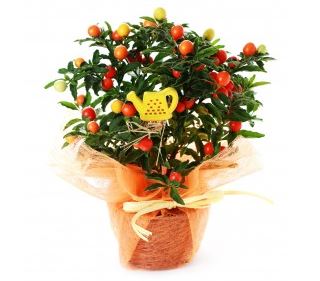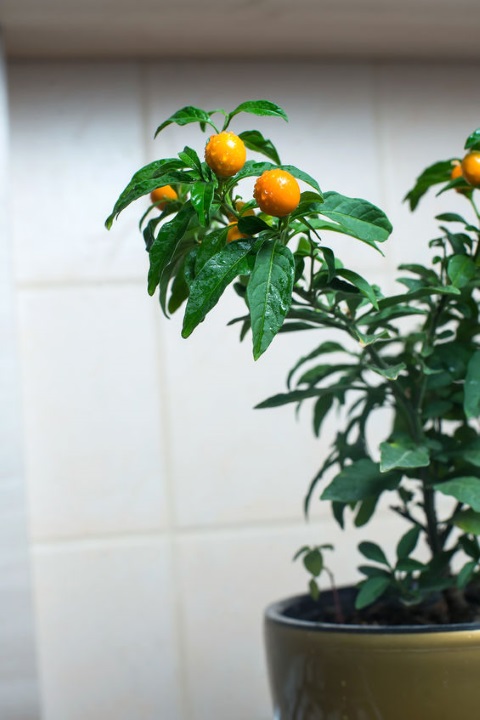





There's only a small amount species from the Solanum genus, which have slight differences. For this article I will name the winter cherry as the S. capsicastrum and the Jerusalem cherry as the S. pseudocapsicum (some name them the other way around, which does not matter).
The main differences between these perennial shrubs is the capsicastrum has smoother stems, shorter leaves, and slightly brighter colored larger berries. There are also varieties such as the variegated (cream and green foliage) and dwarf types (grow up to 1ft tall).
Flowering and berries: Very white or whitish small star shaped flowers bloom during summer, followed by berries that look just like small tomatoes. In fact they may even taste similar to tomatoes, but they're toxic when eaten.
Berries begin green in color, then turn yellowish, orange and red, and are the main attraction rather than the tiny flowers. Flowers last until just before winter and the berries can last for months after the festive holiday period (if they reside in a cool setting).
Foliage: The dark green leaves (with waved edges) only grow to approximatively 2 inches long. Most of the stems grow in an upwards fashion with fine hairs along the outer edge.

Poisonous: The berries can be toxic to dogs, cats and other animals. These are also poisonous for humans and it's advisable to keep well out of reach of children.
Provide time outdoors: Because this plant enjoys bright light and fairly low temperatures you can allow it to sit outside during the summer, with the correct temperatures (see temperature and light guide below).


More suitable plants grown indoors for Christmas can be found here »
Copyright © www.100flowers.win Botanic Garden All Rights Reserved